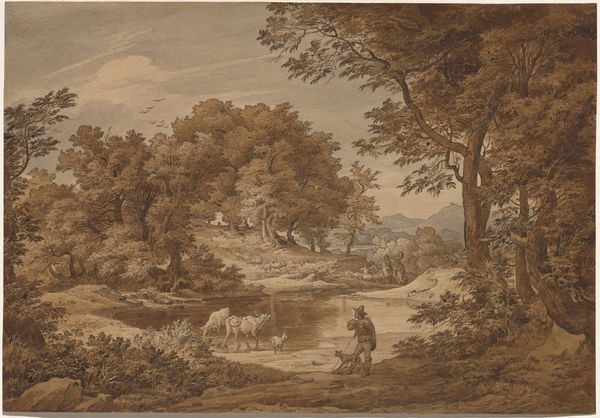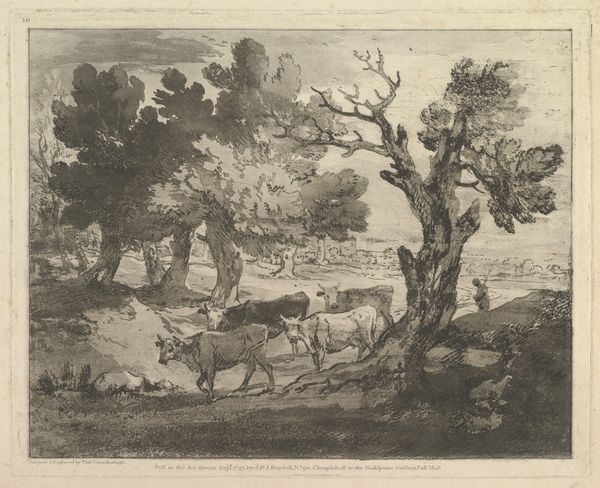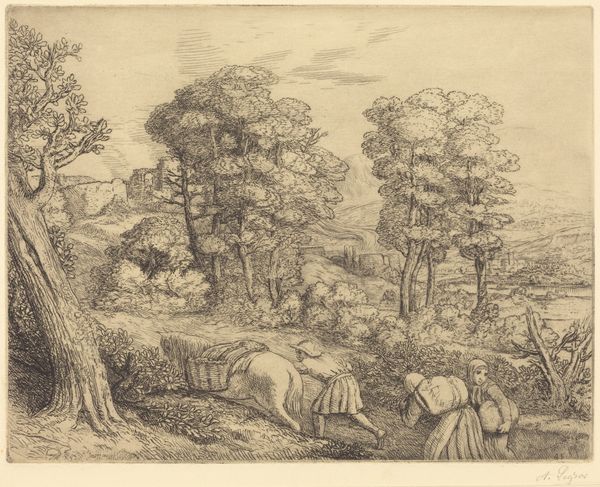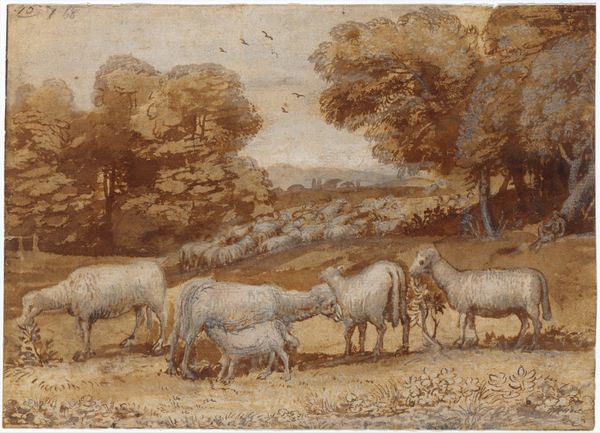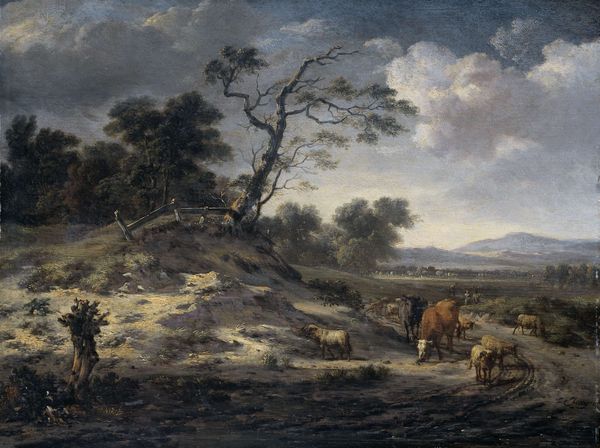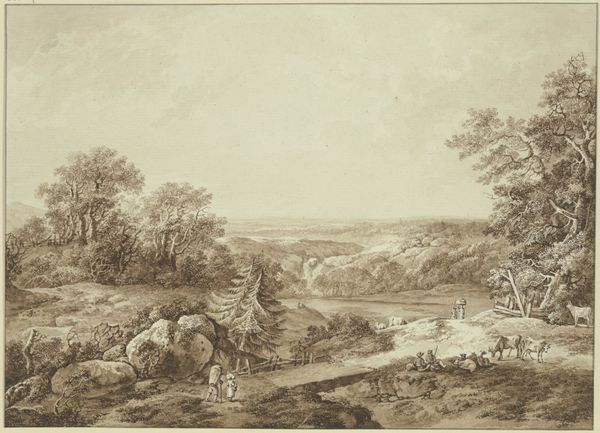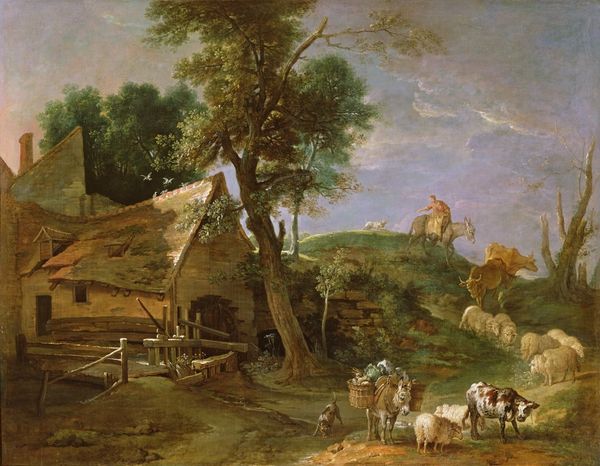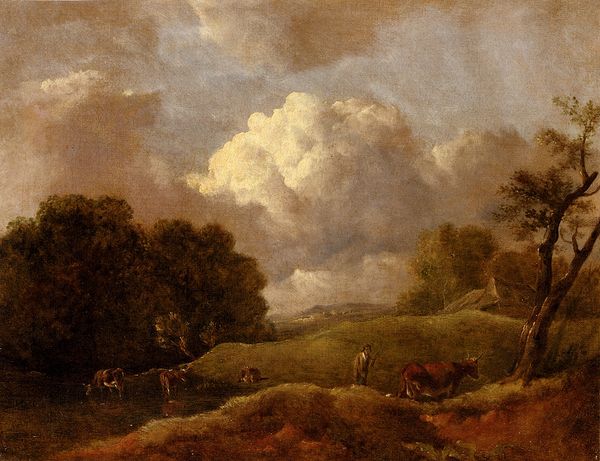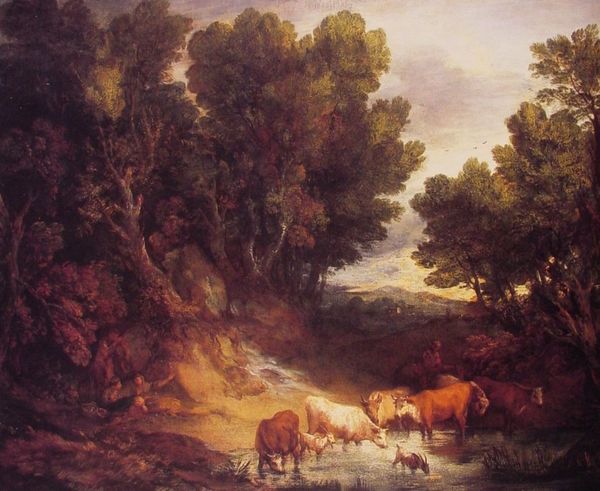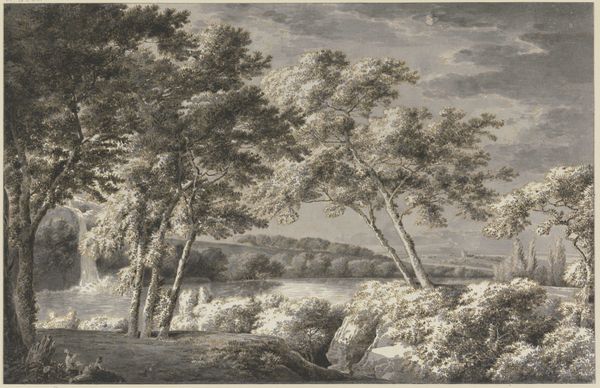
Copyright: Public domain
Editor: So, this is Thomas Gainsborough’s "Wooded Landscape with Cattle and Goats" from 1772. It’s a drawing, using charcoal, which gives it this incredible atmospheric quality. It feels very serene and dreamlike to me. What do you see in this piece? Curator: I'm immediately drawn to how Gainsborough uses the landscape, not just as a backdrop, but as a carrier of cultural memory. Consider how idealized landscapes were deployed at that time to represent a sort of nostalgic vision of rural England, one that was perhaps already fading with industrialization. Notice the animals too; are they simply pastoral features, or symbols of a lost harmony between humans and nature? Editor: That’s a great point. It does feel like more than just a scene. But are you suggesting that the cows and goats represent a harmony that didn't really exist? Curator: Perhaps. It’s crucial to remember that images aren’t always literal representations. These animals, arranged so neatly within the composition, might be symbols referring to the longing for simpler, perhaps even idealized, times, which we see a lot in Romanticism. Ask yourself, what did the imagery of pastoral life *mean* to Gainsborough's contemporary audience? Editor: So, by depicting this idyllic scene, Gainsborough is tapping into a shared cultural understanding and desire for a simpler past. Curator: Precisely. It reveals a subtle commentary embedded within the apparent tranquility of the scene. Do you think we can read any irony in the artist's vision? Editor: That's interesting, I hadn't thought of it that way. I will definitely keep this in mind when I visit the show. Curator: Indeed, these images resonate because they trigger memories and ideas far beyond their immediate subject.
Comments
No comments
Be the first to comment and join the conversation on the ultimate creative platform.

